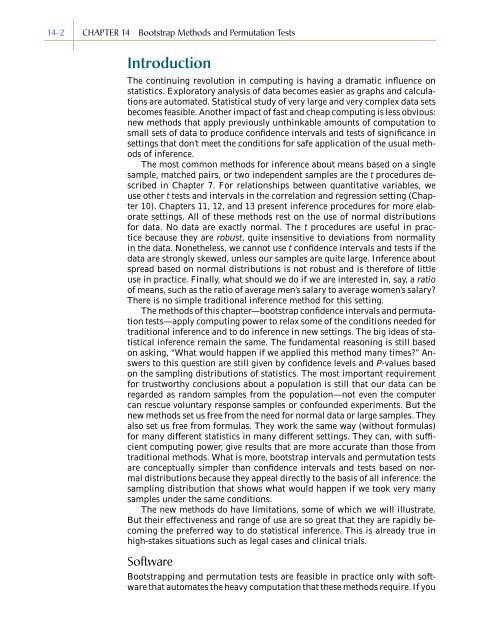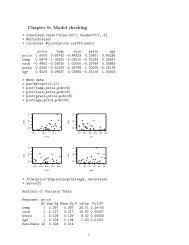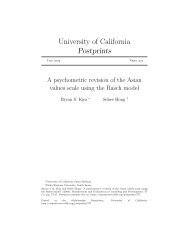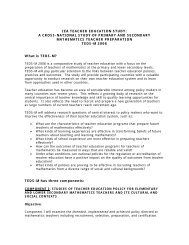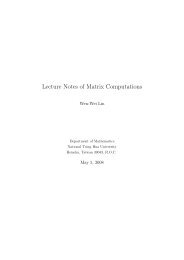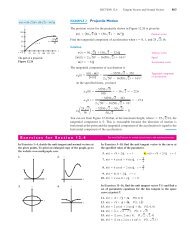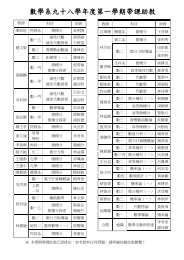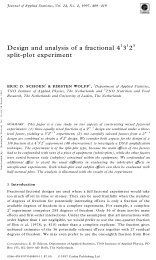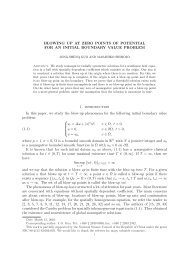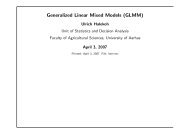Chapter 14 - Bootstrap Methods and Permutation Tests - WH Freeman
Chapter 14 - Bootstrap Methods and Permutation Tests - WH Freeman
Chapter 14 - Bootstrap Methods and Permutation Tests - WH Freeman
You also want an ePaper? Increase the reach of your titles
YUMPU automatically turns print PDFs into web optimized ePapers that Google loves.
<strong>14</strong>-2 CHAPTER <strong>14</strong> <strong>Bootstrap</strong> <strong>Methods</strong> <strong>and</strong> <strong>Permutation</strong> <strong>Tests</strong><br />
Introduction<br />
The continuing revolution in computing is having a dramatic influence on<br />
statistics. Exploratory analysis of data becomes easier as graphs <strong>and</strong> calculations<br />
are automated. Statistical study of very large <strong>and</strong> very complex data sets<br />
becomes feasible. Another impact of fast <strong>and</strong> cheap computing is less obvious:<br />
new methods that apply previously unthinkable amounts of computation to<br />
small sets of data to produce confidence intervals <strong>and</strong> tests of significance in<br />
settings that don’t meet the conditions for safe application of the usual methods<br />
of inference.<br />
The most common methods for inference about means based on a single<br />
sample, matched pairs, or two independent samples are the t procedures described<br />
in <strong>Chapter</strong> 7. For relationships between quantitative variables, we<br />
use other t tests <strong>and</strong> intervals in the correlation <strong>and</strong> regression setting (<strong>Chapter</strong><br />
10). <strong>Chapter</strong>s 11, 12, <strong>and</strong> 13 present inference procedures for more elaborate<br />
settings. All of these methods rest on the use of normal distributions<br />
for data. No data are exactly normal. The t procedures are useful in practice<br />
because they are robust, quite insensitive to deviations from normality<br />
in the data. Nonetheless, we cannot use t confidence intervals <strong>and</strong> tests if the<br />
data are strongly skewed, unless our samples are quite large. Inference about<br />
spread based on normal distributions is not robust <strong>and</strong> is therefore of little<br />
use in practice. Finally, what should we do if we are interested in, say, a ratio<br />
of means, such as the ratio of average men’s salary to average women’s salary?<br />
There is no simple traditional inference method for this setting.<br />
The methods of this chapter—bootstrap confidence intervals <strong>and</strong> permutation<br />
tests—apply computing power to relax some of the conditions needed for<br />
traditional inference <strong>and</strong> to do inference in new settings. The big ideas of statistical<br />
inference remain the same. The fundamental reasoning is still based<br />
on asking, “What would happen if we applied this method many times?” Answers<br />
to this question are still given by confidence levels <strong>and</strong> P-values based<br />
on the sampling distributions of statistics. The most important requirement<br />
for trustworthy conclusions about a population is still that our data can be<br />
regarded as r<strong>and</strong>om samples from the population—not even the computer<br />
can rescue voluntary response samples or confounded experiments. But the<br />
new methods set us free from the need for normal data or large samples. They<br />
also set us free from formulas. They work the same way (without formulas)<br />
for many different statistics in many different settings. They can, with sufficient<br />
computing power, give results that are more accurate than those from<br />
traditional methods. What is more, bootstrap intervals <strong>and</strong> permutation tests<br />
are conceptually simpler than confidence intervals <strong>and</strong> tests based on normal<br />
distributions because they appeal directly to the basis of all inference: the<br />
sampling distribution that shows what would happen if we took very many<br />
samples under the same conditions.<br />
The new methods do have limitations, some of which we will illustrate.<br />
But their effectiveness <strong>and</strong> range of use are so great that they are rapidly becoming<br />
the preferred way to do statistical inference. This is already true in<br />
high-stakes situations such as legal cases <strong>and</strong> clinical trials.<br />
Software<br />
<strong>Bootstrap</strong>ping <strong>and</strong> permutation tests are feasible in practice only with software<br />
that automates the heavy computation that these methods require. If you


